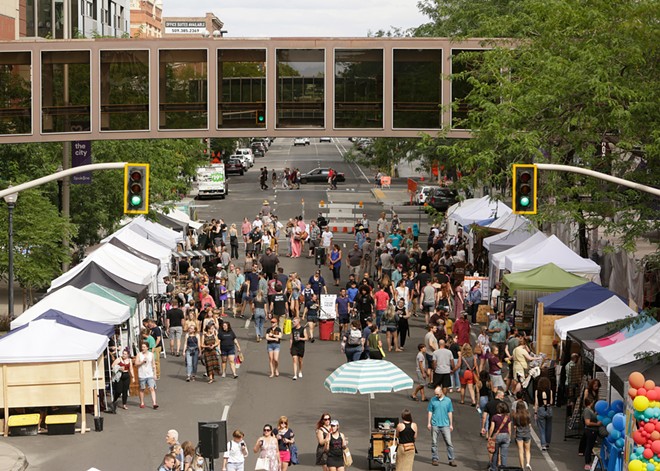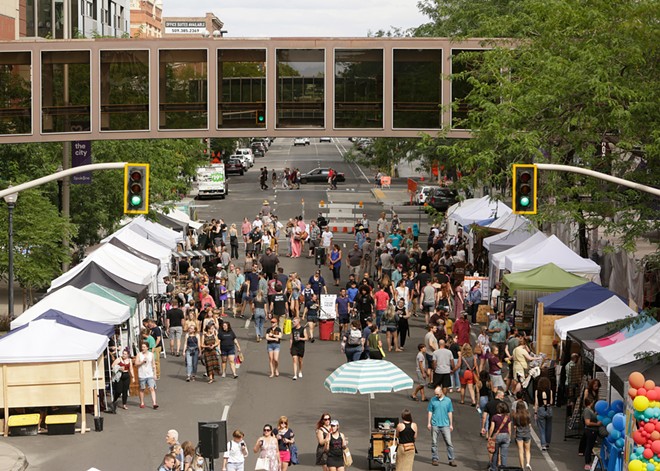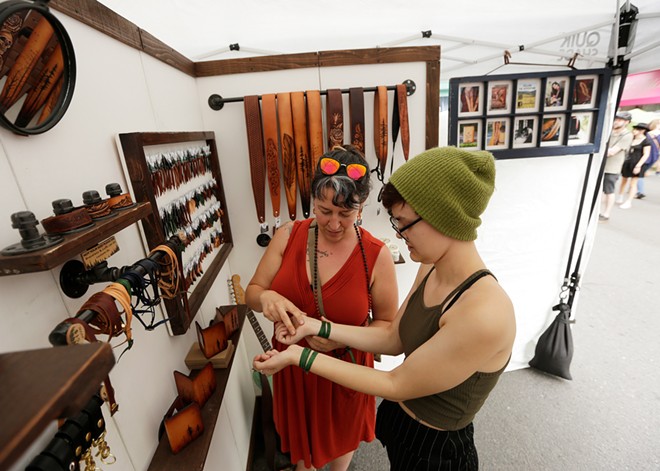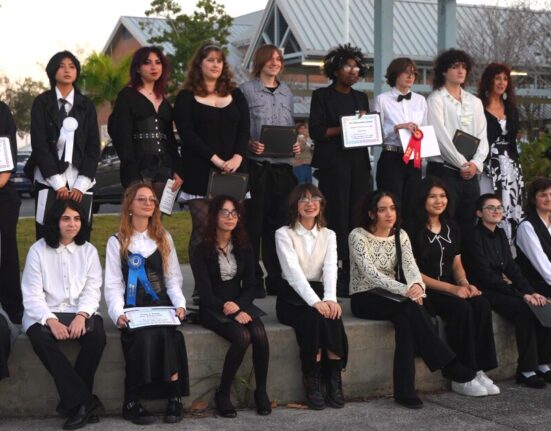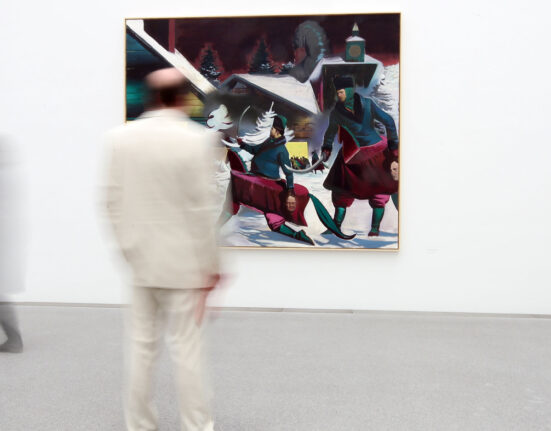When it takes over three downtown blocks this Saturday, the 10th iteration of Terrain’s outdoor arts market, Bazaar, will feature more than 130 booths of locally made art, crafts and other goods along with food, kids activities and live music from acts like T.S the Solution, Aspen Kye and Snacks at Midnight.
The one-day market has become a fixture of Spokane’s summertime event calendar, and this year’s also features concurrent independent activities, like an Expo ’74-themed silent disco, looking to tap into the influx of downtown foot traffic. Terrain’s own estimates put the number of attendees comfortably in the 20,000 range, making it easily as popular as its flagship showcase in autumn.
Those numbers might impress but will likely not surprise. Even when it debuted back in 2014 with fewer than half the number of vendors, Bazaar had a strong showing right out of the gate — partly because of Terrain’s then-burgeoning reputation as a major force in the local arts scene, but also because it filled a cultural niche that Terrain co-founder Ginger Ewing says was glaring.
At the time, artists were lamenting the lack of affordable, effective opportunities to connect with buyers. And the available statistics, such as the Creative Vitality Index, showed that they were not wrong. Back then, the index, a well-known data tool for measuring the health of the creative economy, indicated that Spokane was only seeing around one-third of the arts patrons of a comparably sized city.
“We had this deep-dive data and metric saying that in Spokane, despite its size and despite all of the people who identify as artists, we were really lagging in the art patronage department,” Ewing says. “And so we wanted to create an art market that was a little different, that pushed back against the status quo.”
That led to the inaugural Bazaar, a name meant to evoke both the variety of items on offer and — when heard as its homonym, bizarre — its slightly unconventional take on what an art market is or should be. Rather than setting up on a campus or in a park, for example, Ewing and Terrain leadership deliberately made a “strategic decision” to bring the action into Spokane’s urban center.
“We specifically did it in the heart of downtown Spokane and the retail corridor of Spokane to make a statement that, yes, these larger corporate businesses are an important part of the economy, but so are smaller artists and arts-based businesses,” she says.
To put a finer point on its economic argument, one of Bazaar’s hallmarks has been its longstanding emphasis on affordability. Vendors are asked to have roughly half of their items priced below $100 to make their work — and by extension, art in general — more accessible to all income levels.
In addition to developing the patronage side of the equation by creating a space where artists could potentially cultivate relationships with dozens or even hundreds of buyers in just a few hours, Bazaar was also intended to be a skill-building opportunity. During the market’s formative years, many participants were still learning how to present themselves and their work.
Jackie Caro, who joined Terrain after a few Bazaars were already under its belt and now spearheads the event, says Terrain sought to fill in those missing “education pieces” with “a lot of hand-holding … to try to help with the success of artists.”
“They were building pallet walls for the makers and doing booth classes to kind of help them understand what makes a good booth,” she says. “And that was super great. But I think from that point on, artists grew and grew to a point where they were more self-reliant.”
Now that Bazaar has arrived at its 10-year milestone and augmented itself with an indoor counterpart known as BrrrZaar held during the holiday gifting season, its volunteer event staff are no longer building the labor-intensive (and sometimes precarious) pallet walls.
But local artisans like Jeremiah Colladay continue to apply the skills that they’ve acquired through multiple Bazaars and Terrain’s complementary initiatives, such as its Creative Enterprise program. When Colladay and his wife, Erin, stumbled across the market shortly after moving to Spokane from Florida, they were encouraged to establish their own small leatherwork business, Colladay Leather, in 2016.
Colladay now sells his handmade wallets, belts, mug wraps and guitar straps year-round in Terrain’s retail store at River Park Square, From Here. He also participates in the Manito Park Art Festival as well as other local art markets that Bazaar’s presence has helped catalyze. Yet he credits Bazaar as being the major lynchpin and catalyst in his own career.
“Every year I go there, I get customers that come up to my booth and they show me the wallet they bought years ago,” he says. “And they’re like, ‘Oh, man, I love this thing.’ Or they’re like, ‘I’m still rocking my keychain or my belt.’ That inspires and excites me.” ♦
Bazaar • Sat, June 22 from 11 am-8 pm • Free • All ages • Main Ave. & Post St., downtown Spokane •
terrainspokane.com

